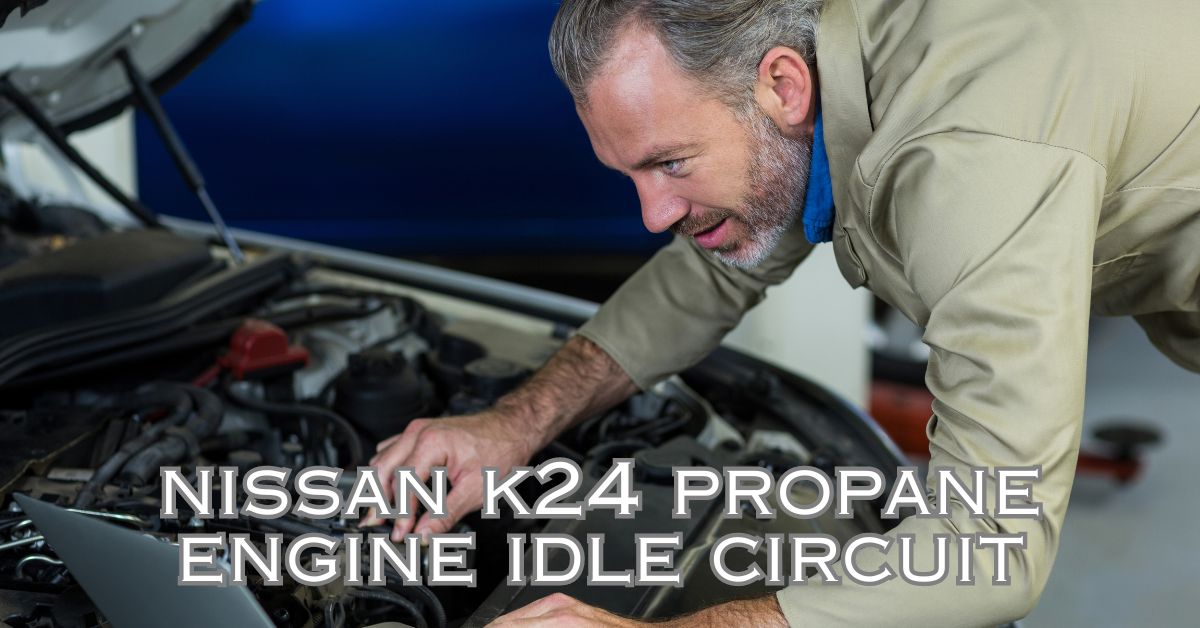The Nissan K24 engine is nicely-appeared for its versatility, being utilized in diverse business and industrial applications. When transformed to run on nissan k24 propane engine idle circuit offers advantages like decreased emissions and fuel performance. However, to optimize the performance of this engine, know-how its idle circuit is essential. The idle circuit guarantees that the engine operates easily whilst the throttle isn’t always engaged, making it a crucial factor for stability and efficiency.
In this article, we will dive deep into the workings of the nissan k24 propane engine idle circuit explaining its functionality, not unusual troubles, and how to troubleshoot problems. We will even speak how this gadget compares with preferred fuel structures and its relevance to trendy propane-powered engines.
Introduction to the Nissan K24 Propane Engine
The Nissan K24 engine has made its mark in numerous industries like technology due to its reliability, adaptability, and efficiency. Traditionally designed as a gasoline engine, the K24 has been effectively converted to run on propane, which brings blessings such as lower emissions, improved gasoline economy, and cost financial savings over time.
One of the most critical components of making sure that the propane-powered K24 engine runs smoothly is the idle circuit. This system manages how the engine operates while the throttle is at relaxation, assisting keep stability and prevent stalling.
What is an Idle Circuit?
The idle circuit in any engine regulates the air-gasoline mixture while the engine isn’t below load, together with when the car or machine is desk bound. In a propane engine, the idle circuit is even more important due to propane’s particular gas traits. The idle circuit ensures the engine keeps a regular, easy RPM when idling, that is specifically essential for system that runs at low speeds for extended intervals.
Components of the Nissan K24 Propane Engine Idle Circuit
Understanding the key components involved within the Nissan K24 propane engine’s idle circuit is essential to grasp the way it operates and what potential problems may additionally get up. Here are the primary elements:
- Idle Air Control Valve (IACV)
The IACV controls the quantity of air getting into the engine when the throttle is closed. It adjusts the air intake to make sure a stable idle RPM. - Throttle Position Sensor (TPS)
The TPS video display units the location of the throttle and sends alerts to the engine manipulation unit (ECU) to modify the fuel injection and air consumption. - Idle Mixture Screw
This element lets in great adjustments to the air-fuel ratio at idle, ensuring the combination is neither too lean nor too wealthy. - Propane Fuel Injectors
These injectors are designed to address propane’s precise residences and ensure the precise amount of fuel is delivered to the engine.
How the Idle Circuit Works in Propane Engines
In propane-powered engines, the idle circuit plays an crucial position in maintaining engine balance, specially at low RPM. When the throttle opens, the IACV controls the airflow, allowing just enough air to enter and keep the engine running smoothly.
The propane gas injectors precisely meter the propane, ensuring the correct air-fuel ratio compared to gasoline .This stability between air consumption and propane injection lets in the engine to idle without stalling or excessive fuel consumption.
Common Idle Circuit Issues in Propane Engines
Idle circuit issues are not unusual in propane engines, and the Nissan K24 is no exception. Common troubles include:
- Engine stalling at idle: If the idle circuit isn’t working properly, the engine may additionally stall frequently when the vehicle is at rest.
- RPM fluctuations: Irregular RPMs can suggest a problem with the IACV or improper air-gas combination.
- Poor throttle reaction: If the idle circuit isn’t functioning efficaciously, there may be a important lag whilst pressing the throttle after idling.
Troubleshooting Idle Circuit Problems
If you come across idle circuit problems on your Nissan K24 propane engine, here are some steps you may take:
- Check the IACV: A malfunctioning IACV is a commonplace purpose of idle troubles. Ensure it’s easy and functioning properly.
- Inspect the propane gasoline gadget: Issues with gas shipping can also reason idle problems, so check the injectors and propane supply.
Adjust the idle combination screw: Fine-tuning the air-fuel ratio would possibly clear up idle fluctuations.
Conclusion:
The Nissan K24 propane engine is a robust device, however like every engine, it requires proper renovation and knowledge of its components to function optimally. The idle circuit plays a critical role in making sure smooth performance, specifically when the engine is running at low RPM or in idle mode. Regular inspection, renovation, and tuning of the idle circuit components can notably decorate the engine’s reliability, gas performance, and longevity.
FAQs
1. What are the benefits of converting a Nissan K24 engine to propane?
Propane is cleaner, more efficient, and often cheaper than gasoline, making it an excellent alternative for industries that use the Nissan K24 engine.
2. How does the IACV affect idle performance in propane engines?
The IACV controls air intake at idle, helping maintain a stable RPM, which is crucial for propane engines that require a precise air-fuel ratio.
3. What should I do if my Nissan K24 propane engine stalls at idle?
Check the IACV and fuel injectors for clogs or malfunctions. Adjusting the idle mixture screw might also resolve the issue.
4. Is propane more difficult to manage than gasoline in engines?
Propane requires more precise tuning in terms of air-fuel mixture, but with proper maintenance, it can be just as reliable as gasoline.
5. What kind of maintenance does the idle circuit require?
Regular cleaning of the IACV and injectors, checking for fuel leaks, and fine-tuning the idle mixture screw can help maintain a smooth idle.





















